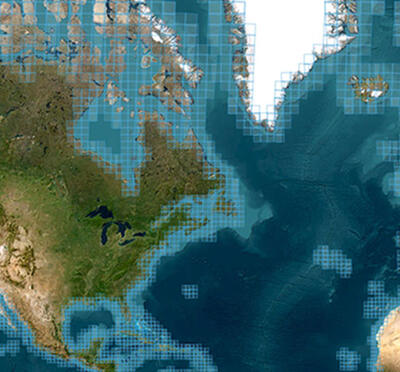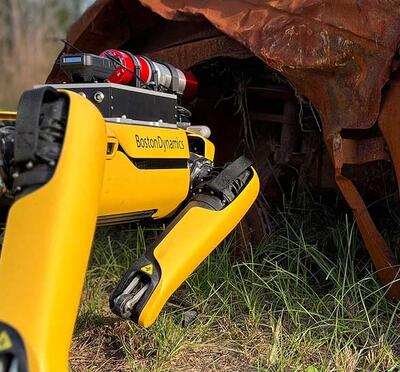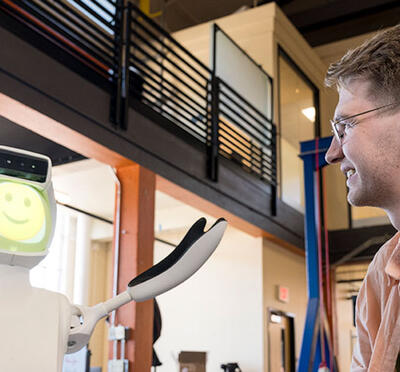M Kelso had a once-in-a-lifetime opportunity during their senior year, as one of the first people to navigate the newly restored Klamath River, site of the largest dam-removal project in history.
Kelso, who graduated in June with a bachelor’s degree in ecological engineering, made the trip as part of a river engineering course taught by Desiree Tullos, professor in the Department of Biological and Ecological Engineering at Oregon State University.
“It was inspiring to witness the ecosystem quickly adapting and restoring itself, and how engineers are monitoring and guiding this process,” said Kelso, who uses gender-neutral pronouns. “It affirmed my belief in nature's capacity to bounce back after significant harm or change.”
Beyond the ecological impact of the river’s restoration, Kelso noted the project’s profound social impacts, particularly for Indigenous communities.
“What was really exciting was the project's community engagement, including decades-long activism and conversations with the Yurok tribe, other local tribes, and farmers impacted by the dams due to agricultural reservoirs and hydropower,” they said.
How they got here
Like the river, Kelso took a winding, indirect route to find their way to Oregon State. Starting as a biochemistry major at the University of Maryland, they switched majors a couple of times before finding a home there in the Department of Environmental Science and Technology.
Then, Kelso took a sharp left turn and headed west 2,800 miles.
“When I moved to Oregon, I found the ecological engineering program at Oregon State,” Kelso said. “I was attracted to the program largely because of the climate crisis.”
Kelso was impressed with the faculty’s strong emphasis on restoration and nature-based solutions. The department is comprised of more than 50% women, and it is led by dynamic professors, like Tullos, who are renowned in their fields.
“Ecological engineering is built around working with ecosystems, rather than destroying them to create something manmade,” Kelso said. “This is inspiring to me. I love ecology, and in this program, we build designs around it, trying to understand all the different systems at play, including human systems.”
Kelso thrived in the ecological engineering program and took advantage of many extracurricular opportunities, including study abroad in rural Mexico, travel to Puerto Rico, and a variety of jobs on campus.
As a participant in the College of Agriculture’s Beginning Researcher Support Program, Kelso helped design an experiment to quantify error in a plant-growth sensor designed by the Openly Published Environmental Sensing Lab. Their work focused on eliminating vibrations from wind or tree shaking to assess the sensor’s precision.
That experience led to Kelso’s current role in an OSU Extension Service lab, where they install sensors for Oregon growers, such as hazelnut orchards and blueberry farms, to measure factors like trunk expansion and water loss.
Where they’re going
Over the summer, Kelso is completing a community agriculture internship. They will remain at Oregon State through the 2025-26 academic year to earn their master’s degree in biological and ecological engineering through the Accelerated Master’s Platform.
Among the many things Kelso has learned on their six-year educational adventure, one of the most important has been patience.
“Looking back to when I was 18, I wish I had been less hard on myself,” Kelso said. “Oregon State fosters a good culture of acceptance. When I started, I was impatient, wanting my path figured out or knowing the destination. But growing up means realizing you can't anticipate changes; you can only react, adapt, and strive to be the best version of yourself you want to be.”



